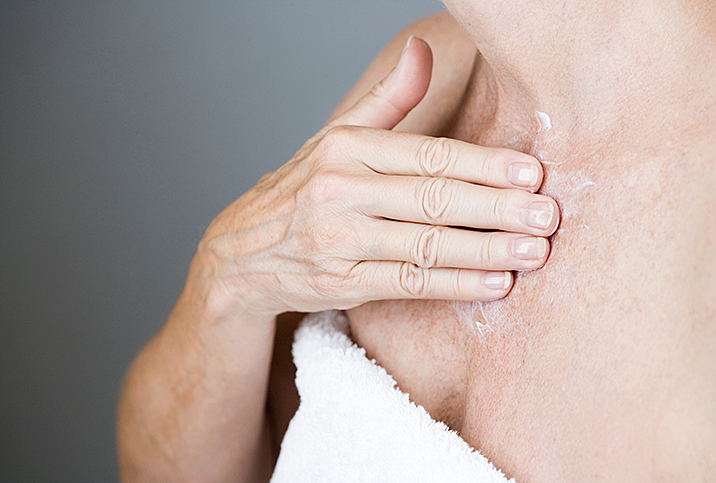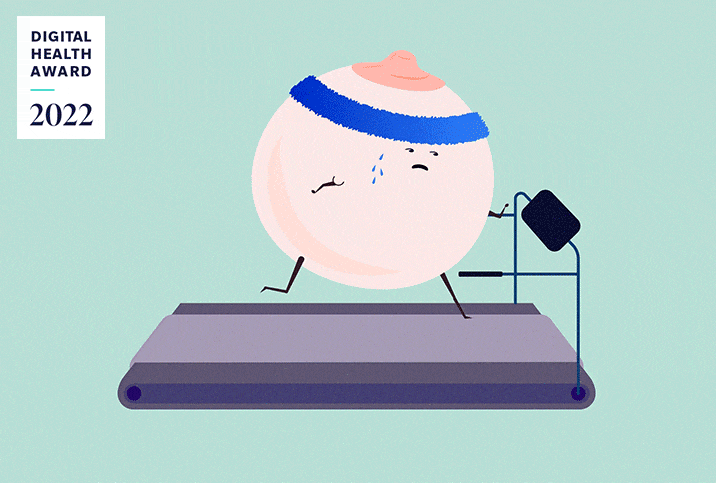Improving Breast Health

Cancer prevention is always top of mind, but the most common health complications for breasts are not cancer-related. Breast health problems can occur both internally and externally, but with regular testing, monitoring and healthy lifestyle choices, you have the power to decrease the risk of many of these common conditions.
An overview of breast health
Fibroadenomas and cysts are growths that occur in breast tissue, often the result of hormonal changes. These growths are often benign, and treatment begins with simply monitoring the growths. Surgery is sometimes employed when these lesions grow to an extent that they cause pain and symptoms due to compressing adjacent nerves and structures.
Externally, the skin of the breast and the nipple are sensitive, and bras and other garments can adhere to the skin and the nipples and cause irritation to these sensitive tissues. Sweat and a lack of exposure to the open air can lead to fungal infections and acne. Though these conditions are generally self-limited and often not dangerous, they can be uncomfortable, so it’s recommended you allow your breasts to breathe so proper blood flow and air can keep the skin and internal tissues healthy. Contrary to common myths and misconceptions, an underwire bra does not cause cancer, but wearing one all the time can be restrictive and unhealthy for your skin.
Breast composition
Paying close attention to breast composition—including nipple appearance and the size and symmetry of the breasts—is a simple and effective way to monitor breast health. Lesions, scaly patches or changes in appearance are important to monitor, as they can be signs of more serious issues.
Awareness of your breast density is also essential. An annual mammogram is the most definitive diagnostic tool to measure breast density—it's an important tool for assessing the breast for any signs of cancer—though sometimes a breast ultrasound is needed as well. When a woman has very dense breast tissue, she should talk to her doctor because there are additional tests and more advanced imaging that can help with cancer screening.
The American Cancer Society advises women with an average risk to begin annual screening mammograms at age 45 until age 54, and then continue every two years. Alternatively, the U.S. Preventive Services Task Force recommends women start screening every two years at age 50 until age 74. The American College of Radiology suggests women begin mammograms at age 40. The Centers for Disease Control and Prevention (CDC) has a handy chart with recommendations from across the healthcare spectrum. Every woman is different, however, so you should talk to your doctor about the best time to start, because many factors, including family history of breast or other types of cancer, are taken into account when making this decision on an individual basis.
Many factors, including genetic history and individual health and lifestyle choices, determine a woman’s chances of developing cancer. Regardless of the risk factors, early detection has proven to be the most important factor in survival. For this reason, regular breast self-exams are essential, but you shouldn't rely on them as your primary diagnostic tool. See your doctor regularly and start screening at the appropriate time based on a discussion.
Breast self-exams and when to be concerned
The first few months of performing a breast self-exam will be trial and error, as you get more acquainted with your breast composition. If you are nervous about what you might find, it can be helpful to practice your first exam at your annual gynecologist appointment (your primary doctor or a radiologist can also show you how). This is the best way to learn what you are feeling and to know that you're doing it correctly.
The first step of a breast self-exam is the visual inspection. Take note of the Montgomery glands—little bumps surrounding the nipples—so that in future inspections you can make sure the nipples themselves and the size, number and color of these bumps have remained the same. The breast itself should be free of lesions, blemishes or swelling. Lifting your arms above your head can help you identify any ridges at the bottom of your breast, which you should report immediately.
The physical inspection of the breast should include your armpit. Lumps in the armpit typically indicate enlarged lymph nodes, which can be a sign of inflammation, infection or, possibly, cancer. While lumps under the skin near the breast are most often the lobules and ducts, knowing how to differentiate these can be helpful, and such knowledge comes with repeated exams. Never hesitate to ask your doctor if you are not sure even after you've been doing self-exams for a while.
Change is the watchword: If you find a new lump, a hard lump or any abnormality, you should tell your doctor, who can perform diagnostic testing for a potential cancer diagnosis. Testing can include bloodwork, a mammogram, an ultrasound and a biopsy—or some or none of those. Just make sure your doctor addresses what you're concerned about. When you consider that 40 percent of cancer diagnoses are made following findings in breast self-exams, not performing these exams is not an option. Again, though, don't rely on them as your primary means of discovery.
Another important tool is genetic testing, which is commonly ordered for certain individuals with a family history of breast cancer.
Natural treatment for breast health
Regardless of your genetic risk factors, following the recommended breast health guidelines can reduce your risk of cancer and ensure you are in peak health should you develop cancer. Daily preventive health measures are the key: a nutritious diet, an active lifestyle and daily supplements to support your immune system.
Generally, a diet that is low in sodium, saturated fats and refined sugars can contribute to a healthy body and immune system, but talk to a dietitian for advice that takes into account any other health issues and dietary restrictions you may have. If you currently are making poor dietary choices, make small changes to start. Swap refined sugar out for fresh fruit and stop adding sugar to your coffee or tea. If you enjoy savory snacks, eliminate the fried foods and try avocado instead. This food swap provides healthy fats and satiates the fried-food craving.
In addition to diet, at least 30 minutes of daily exercise is essential to maintaining healthy organ system function. Yoga and other low-impact exercises improve circulation and stamina, and regular activity, in general, reduces the risk of osteoporosis.
Perhaps the easiest guideline to heed is to maintain adequate hydration, which improves healthy tissue generation and everyday organ function, particularly digestive health. Proper hydration is a keystone of daily breast health, particularly for women who are pregnant or trying to conceive.
Unfortunately, there are no guarantees that a healthy daily lifestyle will prevent breast conditions or cancer, but your health plays a vital role in your ability to fight cancer. If you're concerned about your breast health, performing regular breast self-exams, keeping your annual gynecologist and PCP appointments, and getting mammograms regularly (as determined by you and your doctor) are the most proactive steps you can take.


















